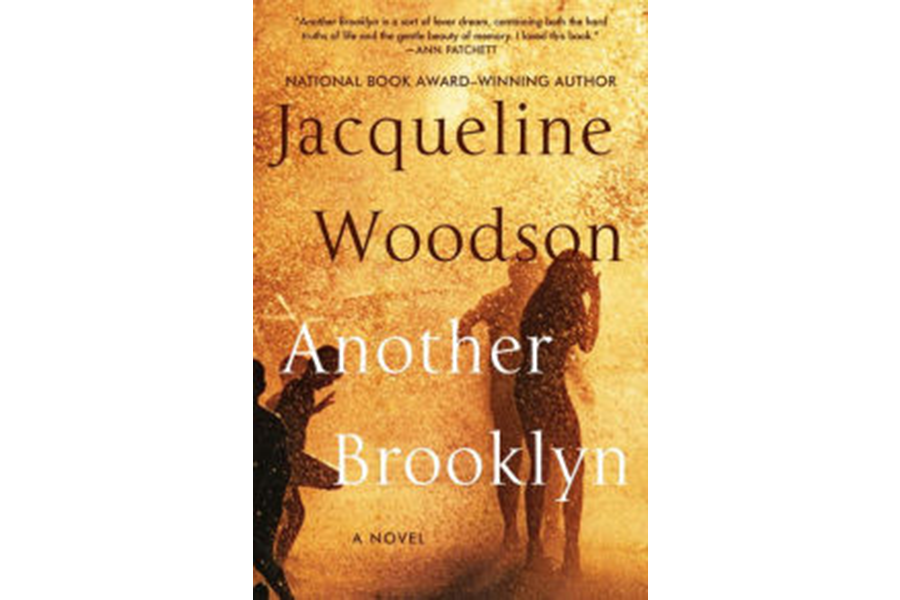'Another Brooklyn' tells of growing up female, black in 1970s Brooklyn
Loading...
The ghosts that haunt the protagonist in Another Brooklyn, the newest novel by award-winning author Jacqueline Woodson, are familiar ghosts. Ghosts of racism, and poverty, and the violence that threatens young women. They are familiar in their timeliness, but at once distant for August, the adult narrator of this story, who reflects on the dramas and traumas of growing up in 1970s Brooklyn.
As the novel opens, a chance encounter with an old friend catapults August back to what was, in many ways, a very different Brooklyn. A Brooklyn before gentrification and soaring real estate prices, August’s childhood Brooklyn is one of both possibility and danger.
For a time, she and her younger brother – transplants from Tennessee, where they believe their grieving mother still waits – are confined to watching Brooklyn from the window of their dingy apartment. From above, they observe packs of children playing in the water from a fire hydrant, and listen for the jingle of the Mister Softee ice cream truck. Of particular interest to August is a trio of three girls, whose friendship she dreams of winning.
The Brooklyn that August and her little brother discover at street level is still the same Brooklyn they saw “turn a heartrending pink at the beginning of each day and sink into a stunning gray-blue at dusk” from their upstairs window. It is a Brooklyn of possibilities: of jazz and poetry, of beautiful Afroed people in bellbottoms and halter tops. But it is also a Brooklyn of poverty and pregnant teenagers and heroin addicts, where danger lurks behind boys’ innocent smiles and a dead-eyed prostitute leaves her young children to fend for themselves.
These ominous images quickly become August’s “new normal,” haunting the perimeters of her late childhood and young adulthood, even as she shields herself with her trio of gal pals: Gigi, Angela, and Sylvia. Like the world in which they’re coming of age, each of these girls represents both possibility and danger – the beauty of what’s inside her at once a promise and a curse. “Something about the curve of our lips and the sway of our heads suggested more to strangers than we understood,” August remarks. But like typical young teens, August and her friends are more concerned with their intimate personal dramas than the external dangers that would derail their dreams.
To teen girls caught up in the richness of the Brooklyn in which they live, these dangers are still ethereal. But to the adult August, reflecting back on the racism, sexism, and classism that slowly dimmed the brightness of their hopes, they are ghosts that will never quite leave her.
Nor will they leave readers. While the setting of “Another Brooklyn” comes vividly to life as a snapshot of the past, the issues this book explores are as current as ever: the unjust burden of race, attitudes about women’s bodies, and a “brand new” religion known as Islam.
Written in Woodson’s trademark lyrical prose, the novel doesn’t politicize these issues, nor does it veer into the territory of commentary. But it doesn’t have to. Layer by layer, episode by episode, Woodson still makes her point. In one particularly wrenching moment, August sees herself through the eyes of Sylvia’s proud, striving father: “We were no longer Sylvia’s friends but ghetto girls.”
These painful moments of awakening are the ghosts that live within August, and within us – under our skin and in our bones. “When you’re fifteen, pain skips over reason, aims right for marrow,” August observes. But grown-up readers of Woodson’s first adult novel in 20 years will find that the pain Woodson chronicles and probes still lingers beneath the surface – a reminder of what it means to grow up female, or a person of color, or just different in America.
“Another Brooklyn” is a melancholy book, but also lovely. And while it deals with tragedies, it isn’t tragic. As in Woodson’s other novels, the act of making it through the teen years is a triumph, a miracle. August’s story manages to celebrate this coming of age even as it remains haunted by the what-ifs and what-could-have-beens of an all-too-recognizable past.








